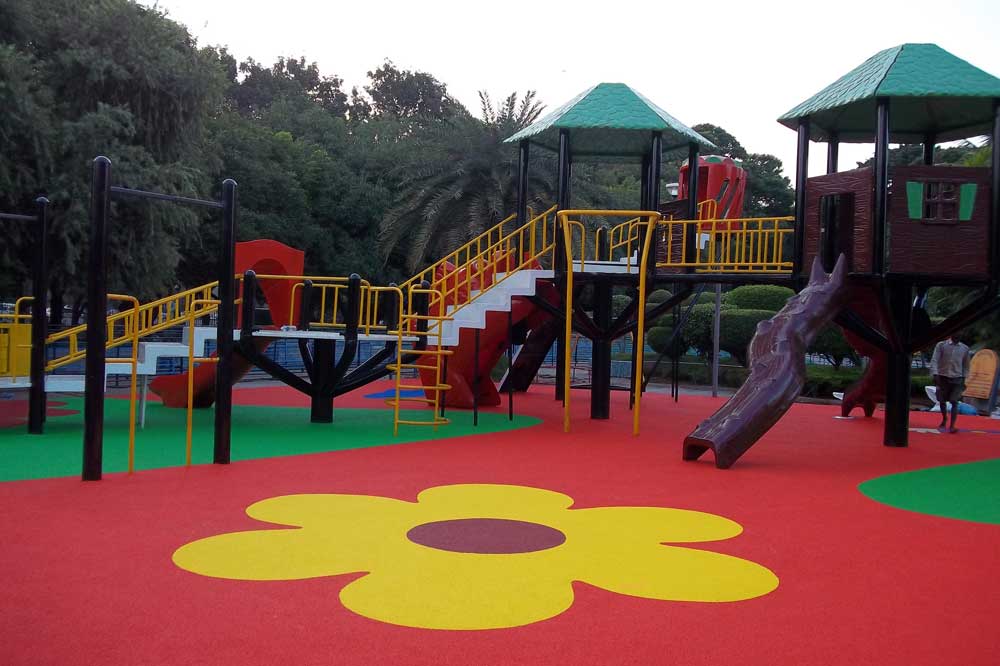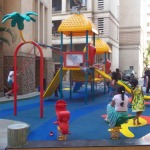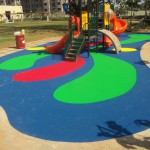Outdoor safety flooring: Four key considerations
It might serve the same purpose of safety and protection, but outdoor safety flooring and its indoor counterpart have different needs and purposes. While some organizations need both types of flooring, same product should not be used for both purposes.
Heat, dust and dew
Of all the others, ultraviolet rays have the most devastating effect on the life of an outdoor floor. It leads to discolouration of the floor surface and causes fading. Niranjan Shimpi, CEO at Ecoflex informs that the material used has to be treated well enough to reduce the adverse effect of rays on the flooring.
“On a hot afternoon,” Shimpi explains, “the top surface of rubberized flooring heats up to 75o C when the temperature is about 35-36o C. Heat is an important factor that needs to be considered while designing safety flooring for outdoor application.”
Apart from heat, outdoor flooring is also exposed to unwanted amounts of morning dew, dust, and other factors that may contribute to its decay—such as rain, strong winds, and sand. An outdoor floor has to possess anti-slip properties than an indoor floor because of dew collection. Outdoor safety flooring also needs to be stuck on much better by using different kinds of adhesives.
Water
One of the most significant differences is the water-permeability of the flooring. A user should be able to clean an indoor floor with a wet mop only. But users have a complete freedom to clean outdoor floors by pouring water. The sub-base used in indoor safety flooring does not allow for such cleaning. Indoor flooring should in fact be non-porous and avoid any accidental seepage of liquids. Flooring surfaces used for outdoors may also need a lot more cleaning due to its exposure to sand and dust.
Draining requirements
The safety flooring for outdoor use is water-permeable and has different draining needs than indoor flooring. “A drain has to ensure that the water that seeps in flows out, so that it does not damage the adhesive used to stick the safe flooring on. Otherwise, it can lead to water accumulation in case of heavy rains and puddles form on it,” says Shimpi. When not drained properly, water can accumulate for a long time damaging the flooring tiles; forming tears, and also making the surface slippery.
Shimpi informs that Ecoflex dissuades its customers from selecting its outdoor playground flooring product Playsafe, for indoor applications. “We do not allow it because each of these flooring products is designed with different objectives in mind. We have Herculean flooring where we have different versions of indoor and outdoor needs,” he says.
Rough and tough
While indoor flooring is for games like badminton and others which has a lighter cork (which would fly away outdoors), outdoor flooring is more for games like tennis where the physical activity like running is also much higher. The floor too has to be tougher. Outdoor flooring also has to account for more rough usage by its patrons. Shimpi gives an example: “We also have to account for nature’s elements as well as pets while designing outdoor floors.”


 Previous Post
Previous Post Next Post
Next Post